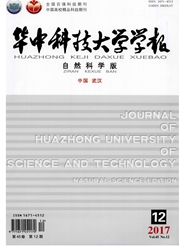

 中文摘要:
中文摘要:
基于循环塑性本构理论对端面齿联轴器螺栓紧固件进行循环载荷下的螺栓初期预紧力松弛分析,对端面齿联轴器各部件进行了三维有限元建模,根据材料的单轴循环应力控制试验数据进行计算参数设置.重点考虑螺纹根部材料塑性累积导致应力丧失,从而进一步引起预紧力衰减的过程.分析了螺栓初始预紧力随扭转循环载荷的变化,发现材料的塑性变形首先发生在第1道螺纹的根部,越接近被夹紧部位越容易发生屈服;预紧力随着扭转载荷循环次数的增加而降低,第1次扭转循环载荷导致预紧力降低的程度最为显著;预紧力松弛的速度随着循环加载而降低.同时,研究了预紧力松弛对端面齿和螺栓头接触应力、螺纹根部等效应力等特征的影响,为端面齿联轴器以及盘式周向拉杆转子的螺栓紧固件松弛的数值仿真研究奠定了基础.
 英文摘要:
英文摘要:
Under the guidance of ratcheting constitutive theory, the self-loosening of bolts in curvic coupling was analyzed in the cases of cyclic torque loads on discs after pre-load of bolts. The models about curvic coupling and thread were established by three-dimensional finite element method in com- mercial finite element software ANSYS. The uniaxial ratcheting experimental data of materials was used to calculate the initial input parameters for the simulations. The course of the stress loss at thread root due to the plastic accumulation of materials and further leading to the reduction of the bolt pre-load were studied. According to the analysis results, the plastic deformation could be found firstly at the first thread boot. The yield could take place with more chance if the thread was closer to the disc. The pre-load of bolt decreased with the torque cyclic loading. The magnitude of the bolt pre-load decreasing was most significant in the first cyclic loading. The rapid of the bolt pre-load decreasing de- graded with the continuance of the cyclic loading. The effects on the contact stress of curvic and bolt head, the structure equivalent stress of thread boot, due to the self-loosening of bolts were studied simultaneously, providing a basic research for rotor with curvic coupling in the simulation analysis of the self-loosening of bolt.
 同期刊论文项目
同期刊论文项目
 同项目期刊论文
同项目期刊论文
 Study on the optimal design of engine cylinder head by parametric structure characterization with we
Study on the optimal design of engine cylinder head by parametric structure characterization with we New reasoning algorithm for assembly tolerance specifications and corresponding tolerance zone types
New reasoning algorithm for assembly tolerance specifications and corresponding tolerance zone types Constitutive model for time-dependent ratchetting of ss304 stainless steel: simulation and its finit
Constitutive model for time-dependent ratchetting of ss304 stainless steel: simulation and its finit Research on assembly sequence planning method for large-scale assembly based on an integrated assemb
Research on assembly sequence planning method for large-scale assembly based on an integrated assemb Development and validation of an analytical model for stiffness analysis of curvic coupling in tight
Development and validation of an analytical model for stiffness analysis of curvic coupling in tight 期刊信息
期刊信息
